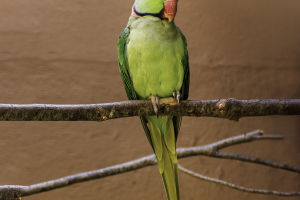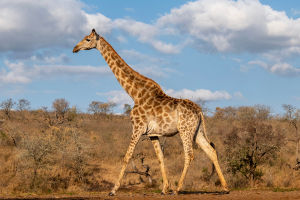When we think of birds, we often imagine them flying freely in the sky.
But what if we told you the biggest bird in the world doesn’t fly at all? Meet the ostrich — the African giant that prefers sprinting across deserts to soaring through clouds. Let's explore its incredible world together.
Meet the Ostrich: The World’s Largest Bird
Ostriches, known scientifically as Struthio camelus, are native to the deserts and savannas of Africa. Unlike most birds, they can't fly due to their large size and underdeveloped wings. But what they lack in flight, they make up for in speed and adaptability. Adult male ostriches can reach up to 8.2 feet (2.5 meters) in height and weigh around 340 pounds (155 kilograms). Females are slightly smaller but still impressive in size.
Feathers with a Purpose (But Not for Flying)
Even though ostriches have wings, they use them in surprising ways. The soft feathers are not built for flying but for balance, temperature control, and even for showing off during mating. Males have striking black feathers with white tips, while females usually have brownish-gray feathers that help them blend into their surroundings.
The Unique Body of a Runner
Let’s talk about those powerful legs. Ostriches have two toes on each foot—unique among birds—and one large toe functions like a hoof. This helps them run incredibly fast, up to 43 miles (70 km) per hour, with strides reaching 10–16 feet (3–5 meters). They can keep running for 20 to 30 minutes when escaping predators.
And their eyes? Massive! Each eye weighs about 2 ounces (60 grams), making them the largest of any land animal. Thanks to these big eyes and long eyelashes, they can spot danger from miles away.
Life on the Move: Social and Smart
Ostriches live in groups of 5 to 50 birds, often sharing their habitat with zebras or antelopes. These herds are very social and always alert. While some members eat or rest, at least one is on guard duty, watching for predators.
They’re mostly plant-eaters, enjoying berries, grasses, and juicy shrubs, but they won’t say no to a crunchy insect or two for extra protein. In dry seasons, they rely on moisture from plants instead of searching for water. But when water is available, they love to splash and clean up!
Parenting and Protection
Male ostriches build simple nests—just shallow holes in the ground—and attract several females to lay eggs there. These eggs are the largest in the world and can weigh around 3 pounds (1.4 kg). Both males and females take turns incubating the eggs. Ostriches are surprisingly gentle parents, often using their wings to shade their young from the sun or protect them from danger.
Defense Mode: Legs of Steel
When in danger, ostriches can kick with incredible force. Their main toe has a sharp claw, and they always kick forward, not sideways or backward. If outrunning doesn’t work, this powerful strike can seriously injure a predator. Lions, cheetahs, and leopards are their main enemies, but many give up once they realize how fast and fierce ostriches can be.
Busting the Myth: Do Ostriches Bury Their Heads in the Sand?
Let’s clear something up — ostriches don’t bury their heads in the sand. This myth likely came from ancient writers or misunderstandings. What they actually do is lower their necks to blend into the sandy ground, especially when guarding eggs or avoiding detection. From a distance, it may look like their heads are buried, but they’re just being clever.
Why We Love Ostriches — And Why You Should Too
Ostriches are full of surprises — from their super-speed and giant eyes to their smart social habits and gentle parenting. They teach us that not flying doesn’t mean being limited. Instead, they thrive by using the tools they do have — speed, strength, and smarts.
Let’s Keep Exploring Together, Lykkers!
Isn’t it amazing how much there is to learn about one incredible bird? If you’ve ever thought birds were only about flight, the ostrich proves there’s more than one way to live large. Let us know — which fact surprised you the most? And would you dare to race one of these speedy giants?
Let’s stay curious and keep discovering the wild side of nature — together!


